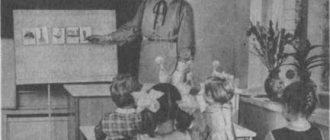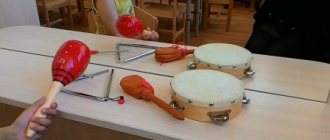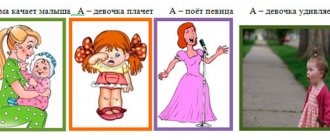Formation of phonemic functions in ontogenesis
Zhanna Saenko
Formation of phonemic functions in ontogenesis
When considering this issue, first of all, it is necessary to clarify the concept of phoneme , phonemic hearing and phonemic perception . Phonemic hearing is a subtle , systematized hearing that allows you to distinguish and recognize phonemes of your native language . It is part of physiological hearing and is aimed at correlating and comparing audible sounds with their standards. Phonemic perception is the mental actions of isolating and distinguishing phonemes , determining the sound composition of a word. Phonemic hearing – monitors the continuous flow of words.
Speech hearing - the joint functioning of phonemic and phonetic hearing , carries out not only the reception and assessment of someone else's speech, but also control over one's own speech. Speech hearing is a stimulus for the formation of pronunciation . [1, p. 125]
It should be noted that in psycholinguistics the concept of “ phonemic hearing ”
and
"
phonemic awareness " are ambiguous.
If we touch upon the earlier works of scientists who studied this problem, namely the works of N. Kh. Shvachkin, then we can note that he does not separate the concepts of “
phonemic hearing ” and
“
phonemic perception ” .
But other scientists (A.R. Luria, N.I. Zhinkin, A.N. Gvozdev, etc.)
already separate these two concepts and believe that
phonemic hearing is one of the basic links of speech activity.
N. Kh. Shvachkin studied the development of phonemic hearing at an early age. In his opinion, during ontogenesis reactions to sound stimulation are already observed in a newborn child. They are reflected in shaking of the whole body, blinking, changes in breathing and pulse. Somewhat later, in the second week, sound stimulation begins to cause a delay in the child’s general movements and a cessation of screaming. All these reactions are innate in nature, that is, unconditioned reflexes.
Further, N. Kh. Shvachkin notes that the first conditioned reflexes to sound stimuli are formed in children at the end of the first, beginning of the second month of life.
Somewhat later, in the third and fourth months of life, the child begins to differentiate qualitatively different sounds (for example, the sound of a piano and the sound of a bell)
and homogeneous sounds of varying pitches.
[1, p. 126]. At this time, according to N. Kh. Shvachkin, intonation plays a leading semantic role in the child’s understanding and expression. At this time, the child develops the ability to differentiate intonation and express his experiences (for example, pleasant and unpleasant)
using shades of voice.
, rhythm receives a special semantic .
In the subsequent months of the first year of life, further development of the auditory analyzer is noted. The child begins to more subtly distinguish the sounds of the surrounding world, the voices of people and respond to them in different ways. N. Kh. Shvachkin argued that a child’s early understanding of words and even instructions spoken by adults is not based on the perception of their phonemic composition , but on capturing the general rhythmic and melodic structure of a word or phrase. The word at this stage is perceived by the child as a single undivided sound, which has a certain rhythmic and melodic structure [2]. The subsequent development of the function of the auditory analyzer, associated with the intensive formation of its second signal system, is characterized by a gradual transition from a generalized perception of phonemic (sound)
speech structures to a more differentiated one. If at the end of the first year the child mainly grasps intonation and rhythm in speech, then in the second year of life he begins to more accurately differentiate the sounds of speech and the sound composition of words [1, p. 127].
The differentiation of oppositional sounds by children occurs gradually:
• Initially, the child distinguishes the most roughly opposed sounds - vowels and consonants, but within these groups there is broad generalization: the consonants are not yet distinguished at all, and among the vowels the most phonemically powerful and easily articulated sound [a] stands out; it is contrasted with all other vowel sounds, which are also not differentiated from each other;
• Next, differentiation occurs “inside”
vowels [i-u], [e-o], [i-o], [e-u]; later than the others, he begins to distinguish high-frequency vowels [ee], low-frequency sounds [u-o], the sound [s] is more difficult to perceive;
• Oppositions are then formed “within”
consonants: determining the presence or absence of a consonant sound in a word as a broadly generalized sound. The subsequent distinction between sonorant and noisy; hard - soft; plosives – fricatives; deaf - voiced; whistling - hissing.
Thus, it is clear that phonemic hearing is formed in children gradually , in the process of natural development. A child between 7 and 11 months responds to a word, but only to its intonation side, and not to its objective meaning. This is an important stage for the development of phonemic perception of N. Kh. Shvachkin called it the period of pre-phonemic development of speech [2] .
By the end of the first year of life, the word for the first time begins to serve as an instrument of communication, acquires the character of a linguistic means, and the child begins to respond to its sound shell ( phonemes included in its composition)
.
Further, phonemic development occurs rapidly, constantly ahead of the child’s articulatory capabilities, which serves as the basis for improving pronunciation, believes A. I. Gvozdev [1, p. 128].
N. Kh. Shvachkin notes that by the end of the second year of life, when understanding speech, the child uses phonemic perception of all sounds of his native language. This stage of development of phonemic perception corresponds to the period of phonemic speech . From the outside, this period is characterized by a rapid increase in passive vocabulary, that is, an increase in the understanding of adult speech. N. Kh. Shvachkin correlates this period with the period of development of phonemic perception of speech , associated with a radical restructuring of both articulation and the child’s speech, since during the period of phonemic speech the relationship between sound and articulation changes radically. Articulation becomes arbitrary, corresponding to the sound expression. Arbitrariness, as N. Kh. Shvachkin notes, is the main property of phoneme . Therefore, the sounds of pre-phonemic speech and the sounds of phonemic speech , despite some of their acoustic similarities, are fundamentally different from each other [2, p. 4-6].
Around the beginning of the third year of life, the child acquires the ability to distinguish all speech sounds by ear and, according to well-known researchers of speech hearing in children, phonemic hearing turns out to be sufficiently formed .
N. Kh. Shvachkin notes in his works that a child under the age of one year has not yet developed phonemic hearing . For its development, he identifies two conditions. The first condition was that the sound complexes differed in meaning. The child must respond to the difference between the objects themselves - “ma”
(mother)
and
“mo” (bottle of milk)
.
Such objective-semantic reinforcement will allow the ear to identify the elements of a sound complex. N.I. Zhinkin dictates the need for such reinforcement by the fact that phonemic differences are very subtle. Auditory attention can miss them if they are vitally, practically not needed by the person who is learning the language. The second possible development of phonemic hearing is the motor implementation of a given acoustic standard. Since speech is a two-way process, a person must pronounce the same speech sounds that are part of the words received from another person. But the first interlocutor can reproduce only those sounds that his hearing can distinguish. Thus, hearing becomes the controller of speech movements. But since as a result of speech movements, sounds are also obtained, then a comparison of the sound given from the outside and reproduced by the student allows both speech movement and one’s own phonemic hearing . First, in the comparison process, someone else's hearing, the hearing of an adult, is included. If issued incorrectly, it requires correction. Subsequently, as successful articulations sanctioned by the teacher accumulate, the student acquires the ability to compare what is due and what is done. This is how, according to N.I. Zhinkin, phonemic hearing is formed [3] .
Thus, many scientists claim, based on research and observations, that primary phonemic hearing is formed on the basis of direct speech communication extremely early. By the age of two, children are well able to differentiate words that differ from each other by only one phoneme . Even words that differ very little from each other (for example, only one voiced or voiceless consonant, or hard and soft) are differentiated by children [3].
V.I. Beltyukov writes about this: “ The function of a child’s auditory analyzer develops relatively early. Already at the very beginning of speech development, the child is able to differentiate only opposing sounds. The function of the speech motor analyzer differs significantly from the sound one” [4].
Researchers argue that special formation of phonemic hearing has to be resorted to only in case of disorders in speech development.
Researchers also note that the development of phonemic hearing and its improvement continues in preschool age. The decisive factor in the development of phonemic hearing is the development of his speech as a whole in the process of communicating with people around him.
Phonemic hearing is formed in a child during the development of impressive speech. Mastery of phonemic awareness precedes other forms of speech activity - oral speech, writing, reading, therefore phonemic awareness is the basis of the entire complex speech system.
When perceiving speech, a child is faced with a variety of sounds: phonemes in the flow of speech are changeable. He hears many variations of sounds, which, merging into syllable sequences, form continuous components. a phoneme from them , while abstracting from all the sound variations of the same phoneme and identifying it by those constant distinctive features by which one phoneme (as a unit of language)
opposed to the other.
If a child has not learned this, he will not be able to distinguish one word from another and will not be able to recognize it. In the process of development, a child develops phonemic hearing , since without it, according to N. I. Zhinkin, speech generation is not possible [1, p. 129]. Phonemic hearing, as noted by many well-known researchers, carries out operations of discrimination and recognition of phonemes that make up the sound shell of a word. It is formed in the child in the process of speech development first of all. Phonemic hearing also develops , which carries out “monitoring of a continuous stream of words
.
Since phonemes are realized in pronunciation variants - sounds (allophones), it is important that these sounds are pronounced in a normalized manner, that is, in a generally accepted, familiar implementation, otherwise they are difficult to recognize by the listener. Pronunciation that is unusual for a given language is assessed by phonemic hearing as correct. Phonemic and phonetic hearing (they together constitute speech)
carry out not only the reception and assessment of other people's speech, but also control over their own speech. Speech hearing is the most important stimulus
for the formation of normalized pronunciation.
If the child has not formed acoustic images of individual sounds, phonemes do not differ in their sound, which leads to to the replacement of sounds.The articulatory base turns out to be incomplete, since not all sounds necessary for speech have been formed [1 , p. 129].
In the sixties of the 20th century, the term “sound analysis”
and identified the following types: natural sound analysis and artificial sound analysis.
Natural (sensory-perceptual)
sound analysis serves oral speech, with its help the meaning-distinguishing
function .
Artificial (intelligent)
sound analysis is not
formed ; children master it during targeted training.
This type of sound analysis serves human written speech. In the process of intelligent sound analysis, three main intellectual operations are carried out: 1) determining the presence or absence of sounds in a word; 2) location of sounds in a word; 3) determination of linear dependence and location of sounds in a word. D. B. Elkonin proposed introducing new different terms to denote these two types of sound analysis - “ phonemic hearing ”
and
"
phonemic awareness " .
Natural sound analysis began to be designated by the term “
phonemic hearing .
” Artificial sound analysis - “
phonemic perception ” [1, p. 132].
M. E. Khvattsev defines phonemic hearing as “the ability to perceive the sounds of our speech as semantic units, which is the main quality of human hearing.” Only with phonemic hearing is it possible to clearly perceive the sounds of speech and the meaning of individual words.
Thus, phonemic hearing is a special type of human physical hearing, which allows you to hear and differentiate phonemes of your native language . Phonemic perception is the analysis of the sound composition of a word.
We mentioned earlier that these two concepts “ phonemic awareness ”
and
“
phonemic perception ” are ambiguous, since in psychology, linguistics, defectology, and pedagogy there are different definitions of these concepts.
In speech therapy and psychological dictionaries “ phonemic hearing ”
is defined as a person’s ability to analyze and synthesize speech sounds, that is, hearing, which ensures the perception
of phonemes of a given language . to understanding the formation of phonemic hearing, but they all agreed that by the age of two, “primary” phonemic hearing becomes the basis for the speech development of preschool children.
A. R. Luria considers phonemic hearing as the ability to generalize into separate groups of different sounds, using essential features of sounds and ignoring random ones.
T. B. Filicheva, T. V. Tumanov consider phonemic hearing as a child’s ability to practical generalizations of concepts about the sound and morphological composition of a word [1, p. 134].
L. E. Zhurova and D. B. Elkonin under the term “ phonemic perception ”
understand special actions to isolate the sounds of a language and establish the sound structure of a word as its unit.
Phonemic perception , according to A. M. Borodovich, is the development of analytical activity in the field of a child’s own speech (the ability to analyze speech, decomposing it into its component elements)
.
In other words, phonemic perception is understood as “the ability to identify sentences in speech, words in sentences, and sounds in words” [1, p.
134]. M. G. Gening and N. A. German see in phonemic perception the child’s ability to perceive by ear and accurately differentiate speech sounds, especially those that are acoustically close. By considering phonemic awareness as an ability rather than a skill, researchers thereby identify it with phonemic awareness .
Thus, most authors characterize phonemic perception as a specially trained ability to subtly distinguish phonemes in one’s own speech [1, p. 134].
During the formation of phonemic perception, a restructuring of primary speech hearing occurs, its mastery and use to solve new problems. Scientists have proven that the development of phonemic hearing and phonemic awareness is of great importance for mastering reading and writing skills.
Imperfect phonemic perception , on the one hand, negatively affects the development of children's pronunciation, on the other hand, it slows down and complicates the formation of sound analysis skills, without which full reading and writing are not possible [3].
Almost all psychologists and methodologists involved in teaching literacy unanimously emphasize that in order to master literacy, it is necessary that the child not only correctly hear and pronounce individual words and the sounds they contain, but - and this is the main thing - have a clear understanding of the sound composition of the language (words)
and would be able to analyze the sound composition of a word.
The ability to hear each individual sound in a word, to clearly separate it from the next one, to know what sounds the word consists of, that is, the ability to analyze the sound composition of a word, is the most important prerequisite for proper literacy training. At the same time, learning to read and write acts as one of the most important stages in the development of consciousness of the sound side of the language. Based on the entire previous path of phonemic development , literacy learning is a higher stage in this development [5].
As can be seen from the above, phonemic perception is the first step in the progressive movement towards mastering literacy, phonemic (sound)
analysis is the second. Another factor:
phonemic perception , according to many scientists, is formed in the period from one to four years, sound analysis - at a later age. And finally, phonemic perception is the ability to distinguish the features and order of sounds in order to reproduce them orally, sound analysis is the ability to distinguish the same in order to reproduce sounds in written form .
N. Kh. Shvachkin conducted research on the development of phonemic speech perception in children at an early age. During these studies, it was found that phonemic differences in speech sounds do not arise immediately. A certain sequence in the phonemic development of children's speech began to emerge. Despite some individual differences in the development of hearing and voluntary articulation of children in the second year of life, it is still possible to schematically outline the genetic series of the phonemic development of a child’s speech.
First phonemic row (vowel distinction)
:
However, not all vowels are immediately distinguished by the child. There are three stages in the development of phonemic perception of vowels :
First stage: distinguishing a and not a,
Second stage: distinguishing y - and, a - uh, y - uh, o - and,
Third stage: distinguishing u-o, i-e.
Second phonemic row (distinguishing the presence of consonants)
:
The child first notes the presence or presence of an extra sound. He gradually begins to detect the presence of an extra sound when comparing words such as “side”
-
“ok”
,
“vek”
-
“ek”,
etc. He, therefore, first perceives a consonant sound as
“something”
: only then does discrimination occur within the consonants. This is a preliminary step to distinguishing consonants from each other.
Third phonemic row (difference between sonorant and articulated noisy ones)
:
From the general group of consonants, the child first identifies sonorant ones. He, as it were, divides the entire sound group of consonants into two parts: sonorant and non-sonorant, i.e. noisy. The primary emphasis on sonorant consonants is explained by the fact that of all consonants they are closest to vowels. At this stage of phonemic development, we first encounter the influence of articulation on the phonemic development of speech .
Fourth phonemic row (distinguishing between hard and soft consonants)
:
Here again the interaction of hearing and articulation is clearly revealed: with a significant delay, phonemically distinguishes in terms of hardness and softness those consonants that he distinguishes later in pronunciation.
Fifth phonemic series (discrimination of sonorant vowels)
:
The child, having divided the consonants into sonorant and noisy, hard and soft, proceeds to differentiate first sonorant, then noisy consonants. Sonorants, in turn, he divides into two groups: 1) nasal, 2) smooth. There is reason to believe that in the opposition “nasal - smooth”
the child produces nasal secretions earlier. Later, differentiation arises, first between nasals, then between smooth consonants. It must be emphasized that the child clearly differentiates smooth consonants at an age when, as a rule, he does not yet master them.
In the process of transitioning to the distinction of noisy consonants, the child manages to finally establish differentiation between sonorant and unarticulated noisy ones (z, zh, x)
.
Noisy ones are divided primarily on the basis of localization, while the initial localization differentiation of consonants is very primitive.
Eighth phonemic row (difference between plosives and plosives)
:
In the transition to the difference between linguals, the differentiation of plosives and blows begins. Data from the phylogeny of speech indicate a stage of phonemic development at which noisy ones were phonemically separated
only for explosive and blown ones. The differentiation of deaf and voiced came later.
Ninth phonemic row (difference between front and back languages)
:
The distinction between front and back linguals requires fine articulation of these consonants. Language localization is difficult for children. Many children replace back-lingual consonants with front-lingual ones or front-lingual ones with back-lingual ones. Imperfect articulation and, along with it, hearing leads to a later distinction of these consonants.
Tenth phonemic series (difference between voiceless and voiced consonants)
:
The distinction between voiceless and voiced consonants appears relatively late. This distinction is made difficult not only by the fact that there is a very subtle acoustic nuance between these sounds; the close similarity of articulation of a voiceless and a voiced consonant also misleads the child. The child thus begins mainly with acoustic differentiation of sounds, then articulation is included and, finally, the process of consonant differentiation again ends mainly with acoustic discrimination. The distinction between hissing and whistling and the distinction between smooth and jot arises very late. To distinguish these sounds, very fine differentiation of movements of the front part of the tongue and maximum perfection of hearing are necessary. It is even more difficult to differentiate between smooth consonants and jot. The child, as is known, does not distinguish them articulatory and, in contrast to the differentiation of deaf and voiced, does not distinguish smooth and jot also phonationally. [6]
In connection with the special significance that the development of phonemic perception , the stages of development of language consciousness in a child outlined by R. E. Levina are of great interest. In total, she outlined five stages.
At the first stage, there is complete absence of differentiation of sounds; Both understanding of speech and active speech of the child himself are completely absent. This is the prephonemic stage of speech development.
At the second stage, there is a difference between the most distant phonemes , but there is no differentiation of close ones. At this stage, the child hears sounds differently than we do. The child's pronunciation is incorrect and distorted. The child does not distinguish between the correct and incorrect pronunciation of other people, and he does not notice his own pronunciation. He reacts equally to both correctly pronounced words and words pronounced the way he himself pronounces them.
At the third stage, decisive shifts occur. The child is already beginning to hear the sounds of the language in accordance with their phonemic characteristics . He recognizes incorrectly pronounced words and is able to differentiate between correct and incorrect pronunciation. At this stage, the former tongue-tied and the new emerging language background . Speech still remains irregular, but adaptation to new perception begins, expressed in the appearance of intermediate sounds between the sounds pronounced by the child and adults.
At the fourth stage, new patterns of sound perception become dominant. However, linguistic consciousness has not yet supplanted the previous form . At this stage, the child still recognizes incorrectly spoken words. The child's active speech achieves almost complete correctness.
At the fifth stage, the process of phonemic development . The child hears and speaks correctly. At this stage, the child ceases to recognize incorrectly pronounced words. He develops subtle and differentiated sound images of words and individual sounds.
The child goes through the first three stages in early childhood (up to three years, in
During preschool age, it goes through the last two stages [7].
Thus, we see that phonemic processes are formed in the child gradually. Phonemic hearing is the basic element of speech activity. Phonemic hearing is the ability to isolate and distinguish phonemes of the native language , which is formed from the age of six months to one year and seven months as a result of verbal communication with an adult. Phonetic hearing is formed on the basis of phonemic hearing and exercises control over syllable rows in speech. Phonemic hearing and phonetic hearing , interacting, make up speech hearing, which is responsible for the sound-syllable structure of the child’s speech. But this elementary sensory-speech-auditory function is completely insufficient for mastering reading and writing skills. Researchers have proven that it is necessary to develop higher forms of phonemic awareness , in which children could divide words into their constituent sounds, establish the order of sounds in words, that is, analyze the structure of a word. D. B. Elkonin called these special actions for analyzing the sound structure of words phonemic perception . Phonemic perception , as mental operations for sound analysis, is formed in the process of special training.
The development of phonemic awareness and phonemic awareness is of great importance for mastering reading and writing skills.
Bibliography
1. Altukhova N. G. Learn to hear sounds. - M., 1986.
2. Lobacheva E.K. Development of phonemic analysis and synthesis in older preschoolers with OHP // Logopedia. - No. 4 - 2005.
3. Gvozdev A. N. Child’s acquisition of the sound side of the Russian language // Age-related psycholinguistics. – M., 2004.
4. Arkhipova E. F. Features of speech therapy work for dysarthria // Correctional pedagogy. No. 1, 2004, p. 36-42.
5. Speech disorders in preschool children / Comp. R. A. Belova - David. – M., 1972.
6. Zhurova L. E. Elkonin D. B. Sensory education of preschool children. – M.: 1963.
7. Zhinkin N. I. Language. Speech. Creation. – M.: 1998.
Development of the phonetic-phonemic side of language in ontogenesis
The phonetic-phonemic side of the language is an indicator of the general culture of speech, the compliance of the speaker’s speech with pronunciation norms.
The phonetic side of speech refers to the pronunciation of sounds as a result of the coordinated work of all parts of the speech-motor apparatus.
The peripheral department of the speech motor analyzer is the speech apparatus, which includes the following:
- The respiratory apparatus, which is the energetic basis of speech (diaphragm, lungs, bronchi, trachea, larynx);
- The vocal apparatus that produces sound (larynx with vocal folds);
- An articulatory apparatus that converts sound produced in the larynx into various speech sounds (oral and nasal cavities).
The conducting part of the analyzer includes three pairs of cranial nerves (glossopharyngeal, recurrent, sublingual), subcortical formations that provide information transmission to the cerebral cortex.
The central part of the speech motor analyzer is the parietal cortex, which analyzes information about the position of the organs of the speech apparatus during speech, and the frontal or Broca's center, which programs and controls the execution of movements. The phonemic aspect of language refers to the ability to distinguish and differentiate phonemes of the native language.
The phonemic aspect of speech is provided by the work of the auditory analyzer. Its peripheral part is located in the cerebral cortex and receives auditory information, including speech sounds.
The conductive part transmits information to the cerebral cortex, which partially analyzes it - determines the direction and distance to the sound source. This function is performed by a large number of transmission connections (VIII. pair of cranial nerves, medulla oblongata, cerebellum, midbrain, medial geniculate body and auditory radius).
The central part of the auditory analyzer is the temporal region of the speech dominant hemisphere (the left hemisphere in right-handed children), Wernicke's center, where speech analysis takes place: It controls the presence of sound in a word, the characteristics of its positional sound, the number and order of sounds in a word, the discrimination of sounds similar in acoustic parameters.
In the book “Educating Correct Pronunciation in Children” M.F. Fomicheva emphasizes that the perception and reproduction of the sounds of the native language is a coordinated work of the linguo-auditory and linguomotor analyzers, where a well-developed phonemic hearing allows one to develop clear diction - mobility and subtle differentiated work of the articulation organs, which ensures the correct pronunciation of each sound (1989).
Research by a number of psychologists, educators, and linguists (D.B. Elkonin, A.R. Luria, D.N. Bogoyavlensky, F.A. Sokhin, A.G. Tambovtseva, G.A. Tumakova, etc.) confirms that basic awareness of the phonetic features of a spoken word also affects the child’s overall language development—the acquisition of grammar, vocabulary, articulation and diction. And it is better that a child with language impairment not only goes to school phonetically correct, grammatically correct and lexically developed, but also knows how to read.
In ontogenesis, the development and formation of the phonetic and phonemic aspects of language occurs gradually.
The main role in language acquisition is played by hearing. Along with the development of hearing, the child develops vocal reactions: various sounds, various combinations of sounds and syllables. At the age of 2-3 months, the child begins to growl, and at the age of 3-4 months, slurred speech... babble. At this age, the primary development of phonemic hearing occurs: The child listens to sounds, finds the source of the sound, and turns his head towards the speaker.
At 6 months, clear sounds appear in the child’s babble, but they are not yet stable enough and are pronounced in the form of short combinations of sounds. In vowels, a clearly sounds, in consonants - p, b, m, k, t. At this stage, the child understands the adult’s intonation and reacts to the tone of voice.
The child pronounces simple sounds well: Vowels - a, u, and consonants - p, b, m, n, t, e, k, d.
The development and formation of pronunciation in all children occurs at different times. Some children speak more and more clearly, others less and less clearly. The quality of pronunciation depends on the condition and mobility of the articulatory apparatus, which is just beginning to actively function. About this A.I. Maksakova.
Development of phonemic hearing
In modern pedagogical, psychological and methodological literature, various terms are used to define phonemic listening: speech auditory processing, phonemic auditory processing, phonemic awareness.
The term "speech hearing" refers to the ability to distinguish individual speech sounds in a speech stream, which allows you to understand words and their meanings. Speech communication is impossible without speech hearing. Children develop their listening skills by listening to others speak or creating their own words. Listening to language is an integral part of language intuition. As children learn to read and write, the mechanism of speech perception changes as the ability to analyze letters and sounds according to the rules of their native graphic language develops. All this is connected with the need for orientation in the morphemic composition of words and word formation. Methods for developing speech hearing are different: listening and speaking practice; phonetic analysis and synthesis, etc.
In the methodological literature on Russian methods of speech and language development, the term “speech hearing” is used. In psychological research and speech therapy, listening to speech is called phonemic awareness.
In the first weeks of a child’s life, auditory attention is actively formed. When a baby hears the sound of a human voice, it stops suckling at its mother's breast and stops crying when spoken to. By the end of the first month, the baby can be soothed with a lullaby. At the end of the third month of life, he turns his head towards the speaking person and follows him with his eyes. During the babbling period, the child repeats and tries to imitate the visible articulation of the adult's lips. Repeated repetition of the kinesthetic sensations of a certain movement leads to the consolidation of the motor ability of articulation. From 6 months, the child imitates individual sounds and syllables and adopts the tone, tempo, rhythm, melody and intonation of speech. By the age of two, children are already able to recognize the subtleties of their native language, understand and respond to words consisting of only one phoneme. Thus, the child develops phonemic awareness, the ability to perceive the sounds of human speech.
From 3 to 7 years, the child increasingly develops the ability to auditory control over his pronunciation, and the ability, in some cases, to correct it. At the age of 3-4 years, the child’s phonemic perception improves so much that he begins to distinguish between vowels and consonants, then soft and hard, sleepy, hissing and whistling. At the age of 4 years, a child should normally distinguish all sounds, that is, phonemic perception should be formed. At the same time, the child completes the formation of correct pronunciation.
The development of sound pronunciation depends on the child’s ability to analyze and synthesize speech sounds, that is, on a certain level of development of phonemic hearing, which ensures the perception of speech phonemes. Phonemic perception of speech sounds occurs through the interaction of auditory and kinesthetic stimuli entering the cerebral cortex. Gradually, these stimuli become differentiated, and it becomes possible to distinguish individual phonemes. Here, primary forms of analytical-synthetic activity play an important role, thanks to which the child generalizes the characteristics of certain phonemes and distinguishes them from others.
Through analytical and synthetic activity, the child compares his imperfect speech with the speech of his elders and forms a healthy pronunciation. Lack of analysis or synthesis usually hinders the development of pronunciation. However, if the presence of primary phonemic hearing is sufficient for everyday communication, then it is not enough for mastering reading and writing.
A.N. Gvozdev, V.I. Beltyukov, N.Kh. Shvachkin, G.M. Lyamina proved that it is necessary to develop higher forms of phonemic hearing, in which children can decompose words into their constituent sounds, determine the order of sounds in a word, i.e. analyze the sound structure of a word.
D.B. Elkonin called these special actions of analyzing the sound structure of words phonemic awareness. In the context of literacy acquisition, these activities are formed through a process of special education in which children are taught the means of sound analysis.









